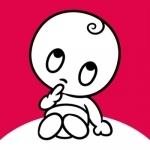
HealthEngine
Health & Fitness and Medical
App
Booking your next health appointment is quick and easy with HealthEngine, Australia’s #1...

English Spanish Dictionary
Reference and Education
App
WORKS OFFLINE. By far, the largest Spanish to English and English to Spanish Dictionary App at any...

BrainWave Binaural Zen
Lifestyle and Health & Fitness
App
3 Advanced Binaural Zen Meditation Programs combined with Soothing Ambient Nature Sounds to create...

Bipolar Test - Do I Have Bipolar Disorder
Health & Fitness and Education
App
If you have an uncontrollable mood, take a Bipolar Test and this mental health app will help you...

A Low GI Diet - Glycemic Index Search
Health & Fitness and Medical
App
User Reviews "This app is very useful for smart shopping." - LeighLeigh2187 "For anyone doing the...

The Wonder Weeks
Health & Fitness and Reference
App
The Wonder Weeks worldwide bestselling baby app is a personalized weekly calendar of your baby’s...

Get Money! Geldmagnet werden mit Hypnose
Business and Lifestyle
App
GET MONEY! BECOME A MONEY MAGNET BY HYPNOSIS • Take a more relaxed approach to financial matters...

Dictionary and Thesaurus Pro
Reference and Education
App
Get the world's most comprehensive ad-free dictionary and thesaurus with extensive offline...

Claimed (Breaking Free #7)
Book
University student Demir Higgs is on the fast-track to graduate with honors and dive straight into...
Mpreg Omegaverse M_M
Hazel (1853 KP) rated The Storyteller in Books
May 30, 2017
Arguably, The Storyteller does not quite read as a Jodi Picoult novel is known to. This is, in part, because of the nature of the story. Most of her previous books deal with medical ethics and/or court cases, whereas this story contains neither. The Storyteller contains a combination of past and present - the main focus being on the Holocaust.
Four people narrate the novel: two in the present day and two giving an account of their experience during the Second World War. It begins with Sage Singer, a 25 year old, hermit-like woman with a disfiguring facial scar – the result of a terrible accident, one that also led to the death of her mother. For the past three years Sage has been participating in a grief group – a place where people who have lost loved ones can come together and talk about their feelings. After three years surely Sage would no longer need the help of the group? However she still attends, not because she finds it helpful, but for the opposite reason. She even says herself: “If it were helpful I wouldn’t still be coming.” It unfolds that she still blames herself for her mother’s death despite the reassurances that it was an accident and not her fault.
It is through the grief group that Sage meets an elderly man, Josef Weber. After becoming friendly and discovering that Sage comes from a Jewish family, Josef confesses to something terrible – he was a Nazi during the war. He killed people. He wants Sage to represent all the Jews he killed and forgive him. Then he wants her to help him die.
Whilst, Josef recounts his experience of being part of the Nazi party, another account is also given. Minka, Sage’s grandmother, describes the terrors she faced as an imprisoned Jew suffering fates such as the deaths of all her family and friends and her time in Auschwitz. Another element to the novel is the vampire story Minka wrote as a teenager. This is interspersed between the other chapters of the book. Unwittingly, Minka’s fictional tale reflects the alienation and destruction of the Jews. The final character is Leo who, like Sage, is narrating the present day, and trying to locate ex-Nazi members in order for them to be punished by the government.
One thing to praise Picoult for, not just in The Storyteller, but also in all her novels is the amount of in-depth research she undertakes to make her stories as accurate as possible even though they are fictional. Minka’s account was written is such a way that it was almost believable that Picoult had been there and experienced it herself. She even learnt to bake bread so that she could write from the point of view of a baker. This is pure dedication!
The Storyteller is an amazing, beautiful book, which is not purely an enjoyable read. It informs, shocks and stays with you for a long time. You will question your own morals and ability to forgive. Is anyone entirely evil? Is anyone entirely good? Perhaps we are both, so why should anyone have the right to treat others as inferior from themselves?
